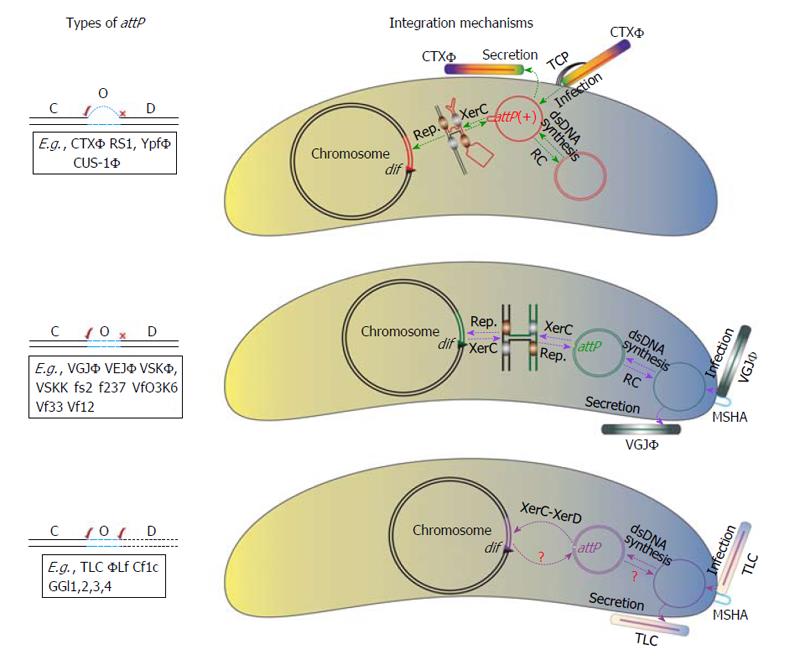Copyright
©2014 Baishideng Publishing Group Inc.
World J Med Genet. May 27, 2014; 4(2): 27-33
Published online May 27, 2014. doi: 10.5496/wjmg.v4.i2.27
Published online May 27, 2014. doi: 10.5496/wjmg.v4.i2.27
Figure 3 Schematic representation of the integration mechanisms of three classes of integrative mobile genetic elements present exclusively in the dimer resolution sites of bacterial genome.
C-O-D denotes XerC-Overlap region-XerD. The XerC-XerD recombinases, attachment site of phage and bacterial genome are essential components of nucleoprotein complex. Compatibility of terminal bases attP with attB immediate after XerC or XerD cleavage is indicated by √. The nucleoprotein complex and the sequential strand exchanges are not yet characterized for TLC and related genetic elements. CTXΦ integration is irreversible. By contrast, VGJΦ and TLC integration is reversible. Key steps in the life cycle of CTXΦ, VGJΦ and TLC are also indicated. Host-encoded TCP and MSHA served as phage receptors for CTXΦ, VGJΦ and TLC, respectively. Generally, TLC exploit fs2 encoded protein for encapsulation of its ssDNA genome and produces virion. Virion recognizes specific receptor present on its host cell surfaces and delivers its single-stranded DNA genome into the host cytoplasm. Once inside the host cell, the ssDNA phage genome is either converted into a double-stranded replicative phage genome by host machineries or directly integrated into the host chromosome. TLC: Plasmids; CTXΦ: Cholera toxin phage; TCP: Toxin co-regulated pilus; MSHA: Mannose sensitive hemagglutinin A.
-
Citation: Das B, Nair GB, Bhadra RK. Acquisition and dissemination mechanisms of CTXΦ in
Vibrio cholerae : New paradigm fordif residents. World J Med Genet 2014; 4(2): 27-33 - URL: https://www.wjgnet.com/2220-3184/full/v4/i2/27.htm
- DOI: https://dx.doi.org/10.5496/wjmg.v4.i2.27









